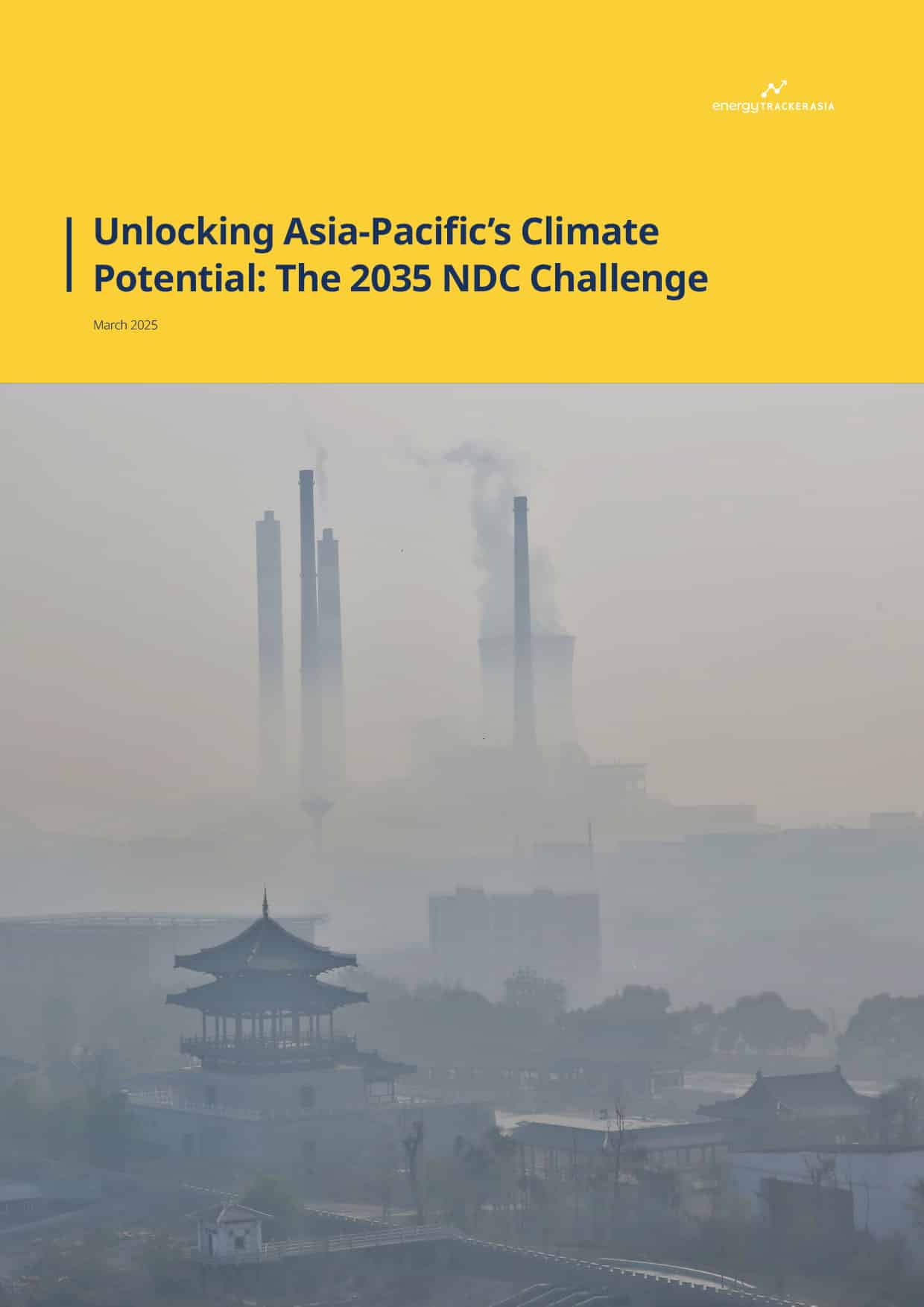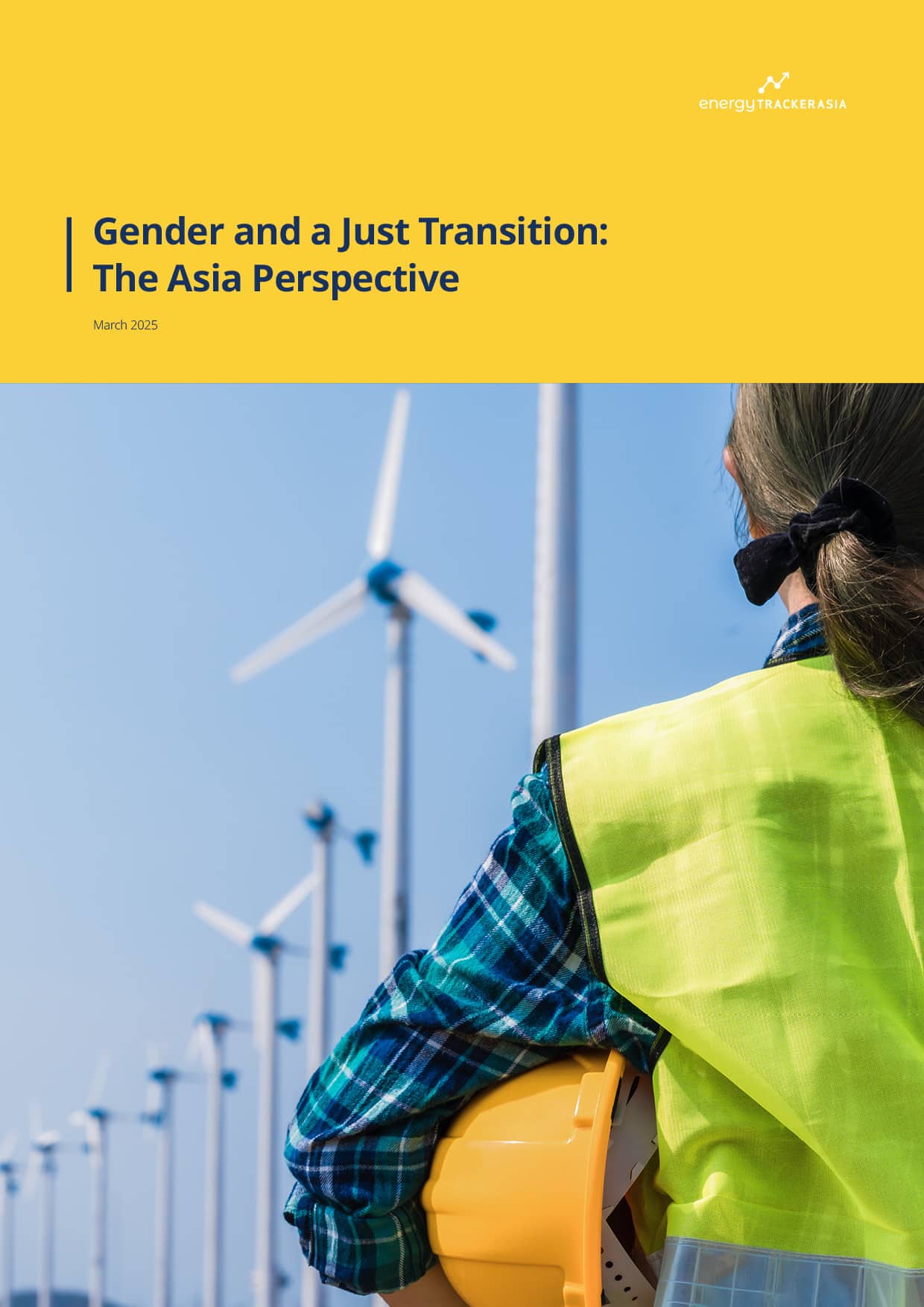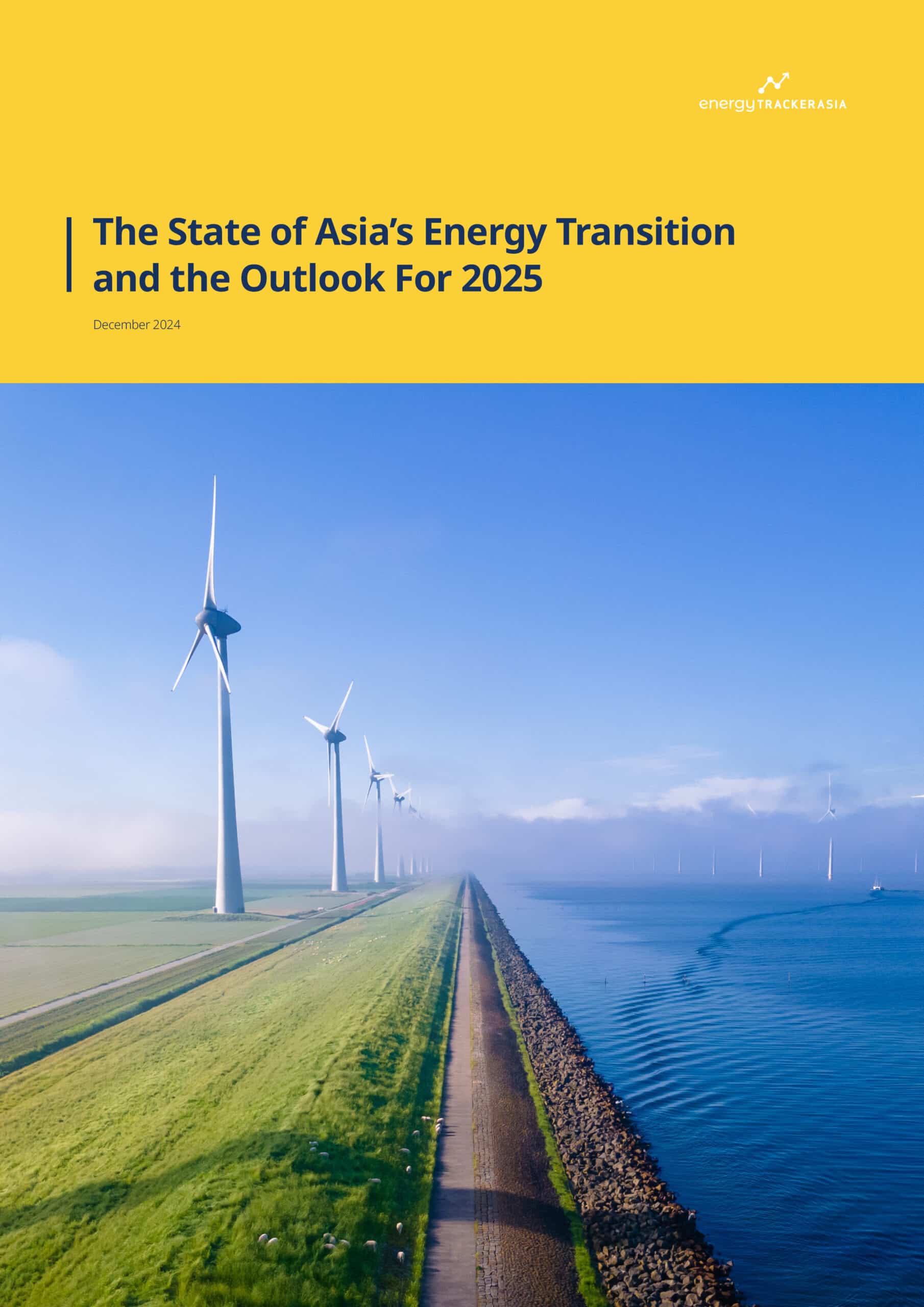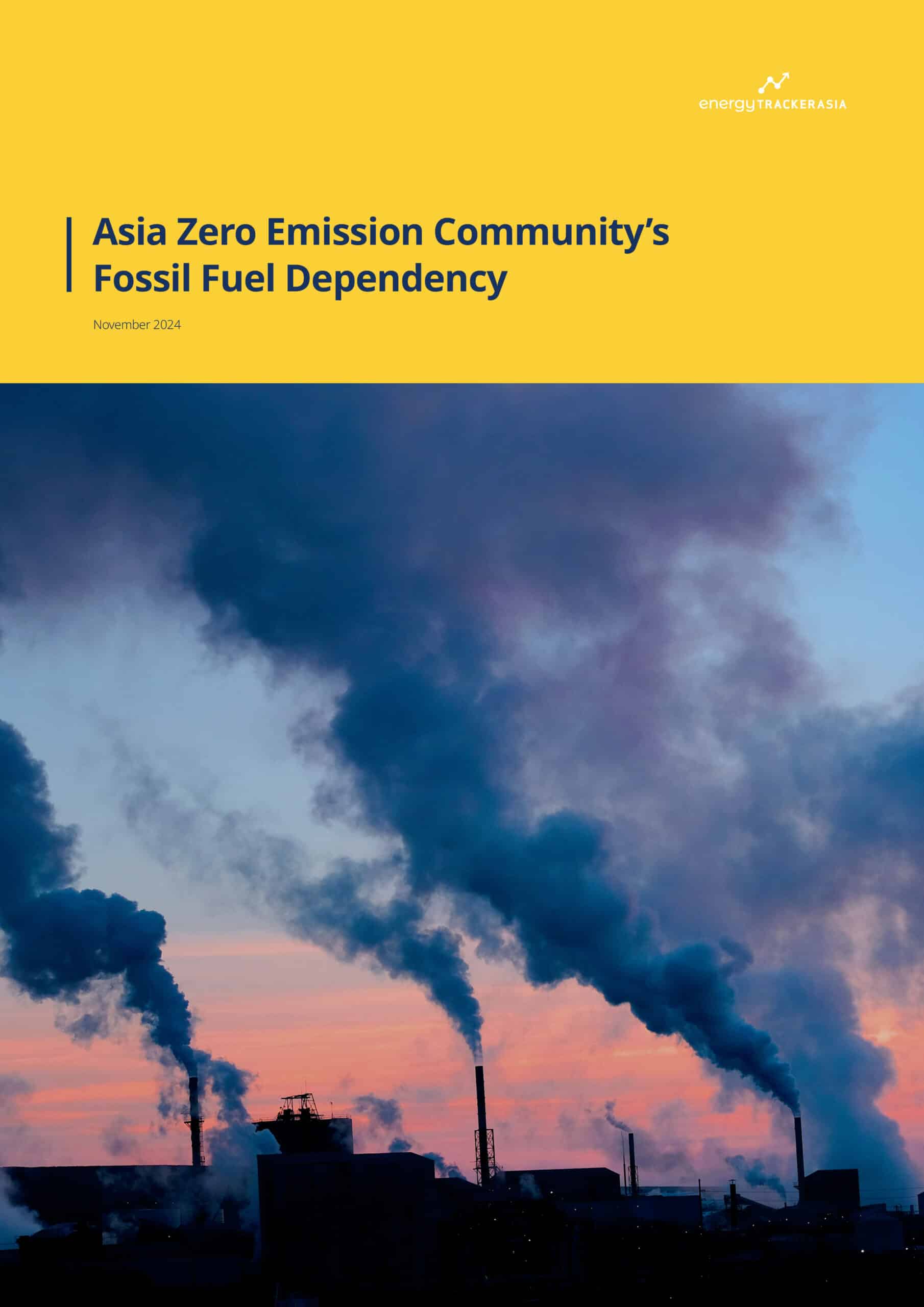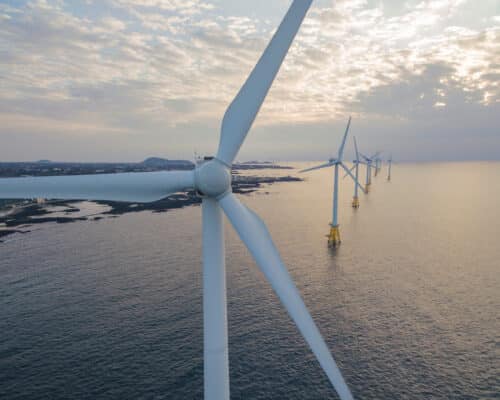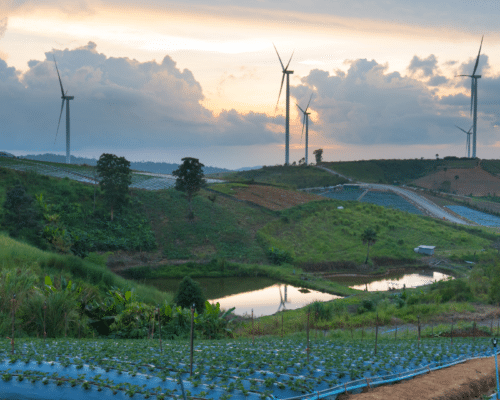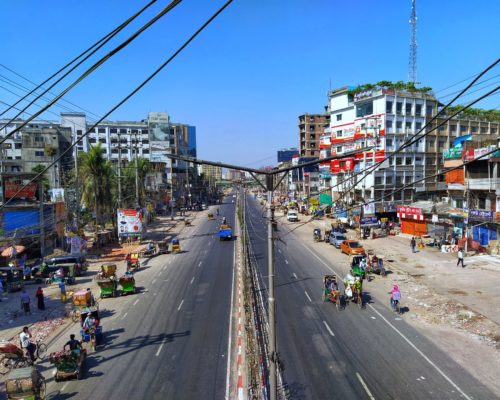The 2025 APEC Meeting: Opportunity For South Korea to Step Up
13 October 2025 – by Viktor Tachev
The idea of the Asia Pacific Economic Cooperation (APEC) was proposed in the late 1980s, and 2025 marks the first time in 20 years that South Korea will host the event. Historically, the country has been among the most active and vocal leaders of the group, including launching the APEC Climate Centre in 2005. The initiative aims to enhance the sustainable growth of the region, share experiences and knowledge in climate prediction and discuss collaborative approaches to tackling climate risks with member economies across APAC. Still, in recent years, South Korea has been falling behind many of its APEC peers in terms of progress on energy transition and climate action. The 2025 APEC meeting offers a prime opportunity to get back on track in leading the APEC toward more sustainable and climate-resilient economic and social systems.
Toward the 2025 APEC Meeting in South Korea: Agenda and Goals
The 2025 APEC meeting will take place between Oct. 31 and Nov. 1 in Gyeongju. The host has selected “Building a Sustainable Tomorrow: Connect, Innovate, Prosper” as the overarching theme, including the priorities of this year’s edition. Key topics on the agenda include artificial intelligence (AI), economic cooperation, sustainable growth and the challenges faced by small- and medium-sized enterprises.
Under the third priority, Prosper, the host, aims to advance the discussion on effectively responding to global challenges, such as energy issues, climate change, health, food security and demographic shifts.
Preparation for the meeting has already begun. At the end of August, South Korea organised the APEC Energy Ministerial Meeting, which focused on discussing grid modernisation strategies and measures to expand a stable, economical and reliable energy supply. In his opening remarks during the event, Vice Minister of Trade, Industry and Energy Lee Ho-hyeon stated that South Korea was “developing various technologies to expand energy supply in response to demand surges”. More information about the strategies in question, as well as South Korea’s approach to addressing issues related to energy, climate change and food security challenges, is expected to be shared during the main event next month.
The Regional and Global Importance of the APEC Meeting
In 2020, APEC adopted the Putrajaya Vision 2040, a blueprint and long-term plan that defines the group’s priorities and outlines methods for advancing them. Under it, the APEC has pledged to “promote economic policies, cooperation and growth, which support global efforts to comprehensively address all environmental challenges, including climate change, extreme weather and natural disasters, for a sustainable planet“. The pressure to deliver on those fronts, this year, would be on South Korea.
The outcome of the APEC meetings traditionally has not only local, but also global importance, since the 21 countries that are part of the group are home to over 3 billion people and generate 61% of the global GDP. The 2025 meeting of the group, which includes leading emitters, like China, Australia, Japan, the US, Canada, and Southeast Asian nations, such as Vietnam, the Philippines, Malaysia and Indonesia, also bears significant importance, since it marks the 10th anniversary of the Paris Agreement and the deadline for the 2035 NDC updates.
Understandably, this highlights the importance of climate-related topics on the agenda and turns the focus toward the meeting’s host to lead a productive dialogue, resulting in tangible outcomes.
South Korea and Its History as a Fossil Fuel Stronghold
Оver the years, South Korea has demonstrated a strong fixation on fossil fuel technologies and a resistance to accelerating the development of renewables. According to Ember, the country generated just 10% of its electricity from renewable sources in 2024, significantly below the global average of 32%. The share of solar and wind energy (6%) was also less than half of the global average of 15% and even lower than that of many less economically powerful and developed peers from Southeast Asia. Fossil fuels, on the other hand, are responsible for 60% of South Korea’s electricity generation mix. As a result, its 2024 emissions per capita were almost triple the global average.
While Ember notes that South Korea’s emissions peaked in 2018, the country’s energy system plans don’t signal that an accelerated shift toward renewables is on the cards. As per current targets, South Korea aims for just 20% renewable electricity by 2030, which is well below the global share of 60% the IEA Net Zero Emissions scenario recommends.
Experts increasingly view South Korea’s 11th Basic Plan for Long-Term Electricity Supply and Demand (BPLE) as overly reliant on fossil fuels. The final version of the BPLE, published in February 2025, aims to quadruple clean energy capacity, including renewables and nuclear, to 121.9 GW by 2038, compared to 30 GW in 2023. However, the IEEFA notes that the plan fails to triple capacity by 2030 and prioritises polluting LNG-fired power and unproven and expensive nuclear power from small modular reactors. Furthermore, experts explicitly warn about the investment risks associated with new LNG infrastructure buildup plans, urging the government to consider accelerating renewable energy deployment instead.
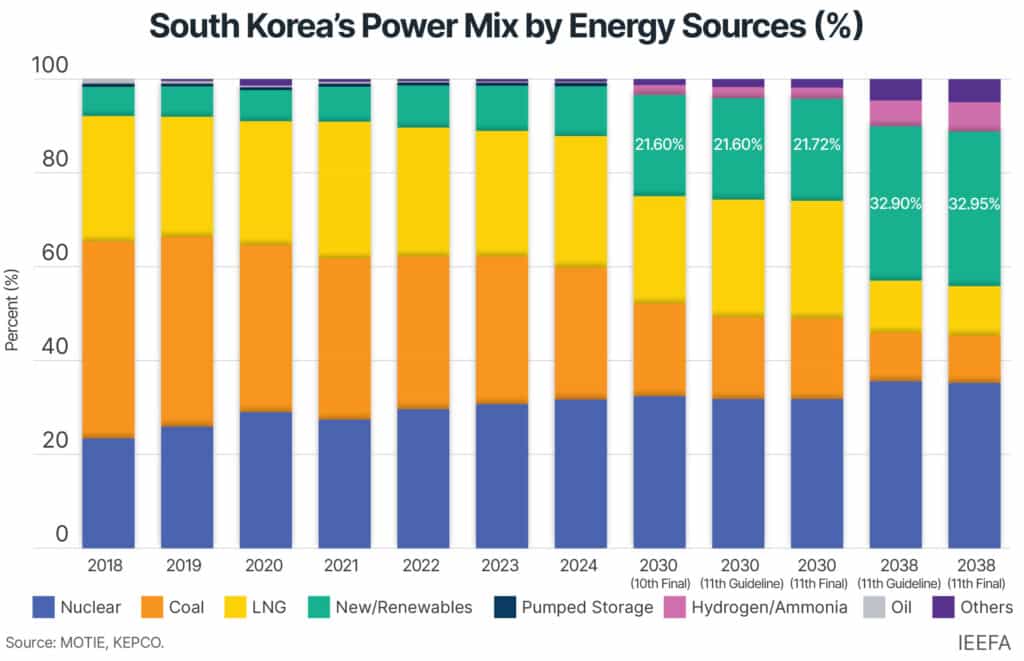
Still, the country is working to increase its LNG supply, as showcased by the agreement to purchase USD 100 billion worth of energy from the US, in a bid to avert Trump’s tariff regime. According to the IEEFA, steps like these would not only undermine South Korea’s decarbonisation plans but also exacerbate energy security, financial and stranded asset risks.
Climate Analytics notes that the BPLE also features unproven and costly solutions, such as hydrogen and ammonia co-firing. According to the Centre for Research on Energy and Clean Air (CREA), the latter would have a negligible emissions reduction potential, while simultaneously significantly worsening air pollution and increasing the concentration of fine particulate matter and toxic substances, posing health hazards for Koreans. Air pollution is already a significant problem for Korea and many of its districts.
South Korea Needs Ambitious 2035 NDC Targets to Change Course
The number of countries to have submitted their updated 2035 NDCs is progressively increasing. During the 2025 UN Climate Summit, almost 40 nations announced or reiterated their NDCs and signalled plans to raise ambition ahead of COP30. Korea wasn’t part of them, with the new government expected to do so this month.
Experts see a bold target of at least a 61% reduction from 2018 levels by 2035 as the achievable minimum for Korea to maintain credibility and strengthen its climate leadership in Asia. This would entail phasing out coal by 2035, cancelling new LNG projects, deploying renewable energy and storage technologies and electrifying transportation.
The Asia-Pacific Economic Cooperation 2025 Meeting Offers South Korea a Prime Opportunity to Brush Off the Climate Laggard Image
Korea remains one of the few developed nations that aren’t part of the Clean Energy Transition Partnership (CETP), a global initiative of governments, their official export credit agencies, public finance institutions and multilateral development banks committed to transitioning international public support from the unabated fossil fuel energy sector to the clean energy transition. Furthermore, the country doesn’t participate in the Powering Past Coal Alliance (PPCA), which aims to phase out coal entirely on a national level, with only a few Korean provinces making exceptions. However, if South Korea is serious about being a global climate leader, it must declare a clear end date for coal. Last but not least, in 2024, South Korea’s Constitutional Court ruled that the government’s current climate policies were unconstitutional, as they failed to protect the rights of future generations to a healthy environment.
All this, paired with the signs that the country plans for a future entrenched in fossil fuels, means the Korean government has a lot of work to do to brush off the image of a climate laggard and capitalise on its world-class engineering capabilities, cutting-edge technology and innovation traditions to accelerate clean energy deployment and climate action.
The signs from the new leadership are positive. President Lee reiterated Korea’s commitment to expanding renewable energy, signalling intent to pursue a different energy path from some other major powers. According to the IEEFA, if South Korean companies scrap their plans for building 4.7 GW of LNG-fired power plants for semiconductors, AI data centres and various industrial complexes, and prioritise tripling renewable energy, the country can meet their growing electricity demand, while remaining globally competitive.
The numbers reveal that solar power is already cheaper than natural gas in Korea, while onshore wind will become cheaper by 2026. But to effectively scale up renewable energy generation, the government should address existing challenges, including underdeveloped grid transmission and distribution systems, ineffective Power Purchase Agreements, and an inefficient Renewable Portfolio Standard. The first step in this journey, however, is declaring an ambition to accelerate the clean energy transition. Jeju Island and its leadership’s plans for advancing towards a more secure, reliable, clean and affordable energy future offer a blueprint for other provinces to follow.
The upcoming months are crucial for South Korea. The government aims to host COP33 in 2028, and the choices made by the leadership by the end of the year could define its climate, economy and reputation for the coming decades. While the prospects are promising, it remains to be seen whether the country will follow through on its declarations by submitting a strong NDC and limiting the use of fossil fuels.
Conveniently, the APEC 2025 meeting presents Korea with a unique opportunity to step up as the global climate leader it has the potential to be, at a time when others are stepping back.
by Viktor Tachev
Viktor has years of experience in financial markets and energy finance, working as a marketing consultant and content creator for leading institutions, NGOs, and tech startups. He is a regular contributor to knowledge hubs and magazines, tackling the latest trends in sustainability and green energy.
Read more